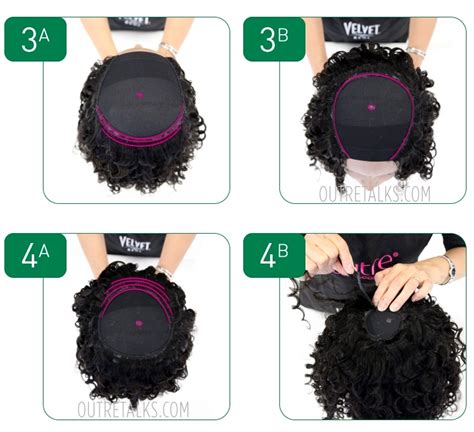Why a Side Part Wig?
According to a survey by the American Hair Loss Association, over 50 million Americans suffer from hair loss. For those looking to enhance their appearance, wigs offer a versatile solution. And among the various wig styles, side part wigs stand out for their natural and flattering look.

Benefits of a Side Part Wig
- Natural Appearance: Side part wigs mimic the natural growth pattern of hair, resulting in a realistic and seamless look.
- Versatility: Side part wigs can be styled in various ways, such as sleek and straight, bouncy and voluminous, or with added accessories like braids or clips.
- Coverage: Side part wigs provide ample coverage, effectively concealing thinning areas or hair loss.
- Enhancement: A well-placed side part can frame the face, accentuate features, and create a more balanced appearance.
Choosing the Perfect Wig Side Part
Selecting the right wig side part is crucial to achieving a flattering and natural look. Consider the following factors:
-
Face Shape:
- Oval faces: Most side parts suit oval faces.
- Round faces: Avoid center parts that accentuate width. Consider deep or angled side parts.
- Square faces: Side parts help soften sharp angles. Try a deep side part or a side-swept fringe.
- Heart-shaped faces: A soft side part can balance a wider forehead.
-
Hairline:
- Receding hairline: A deep side part can cover a receding hairline by concealing the thinning area.
- Irregular hairline: A side part can help disguise an irregular hairline by creating a more symmetrical appearance.
-
Density:
- Thick hair: A side part can add volume and movement to thick hair.
- Thin hair: A side part can create the illusion of fullness by exposing the natural scalp and adding height at the roots.
Step-by-Step Guide to Creating a Wig Side Part
Materials:
- Wig with lace or monofilament cap
- Mannequin head or wig stand
- Wig brush
- Wig combs
- Bobby pins or sewing needle and thread (optional)
Instructions:
- Prepare the Wig: Place the wig on a mannequin or wig stand. Brush the hair gently to remove any tangles.
- Determine the Parting: Use a wig comb to gently tease the hair along the desired part line. Use your fingers or a styling tool to create a slight indentation.
- Separate the Hair: Divide the hair into two sections, one on each side of the parting. Use wig combs or your fingers to keep the sections separated.
- Smooth the Hair: Brush the hair on each side of the part smoothly using a wig brush.
- Secure the Part (Optional): For a more permanent hold, you can secure the part using bobby pins or by sewing the hair along the part line with a needle and thread.
- Style and Finish: Style the hair as desired. Use volumizing products or heat styling tools to add body and shape.
Effective Strategies for a Natural-Looking Wig Side Part
- Create a Subtle Part: A deep side part can appear unnatural. Aim for a soft and gradual transition from one side to the other.
- Avoid Over-Blending: While blending the two sides of the part is important, don’t overdo it. Leave some slight variation in hair texture and color to maintain a realistic appearance.
- Use Layers: Layers can add depth and movement to the side part, making it less obvious.
- Accessorize Sparingly: Overusing accessories like clips or braids can distract from the natural flow of the side part.
Common Mistakes to Avoid
- Using a Center Part: Center parts can make wigs look unnatural.
- Parting Too Deep: A deep part can expose too much of the wig cap.
- Over-Styling: Excessive styling can damage the wig and make the part look artificial.
- Neglecting Maintenance: Regular brushing and cleaning are essential to maintain the integrity of the wig and its side part.
Conclusion
Creating a perfect wig side part can elevate your appearance and restore your confidence. By following these tips and avoiding common mistakes, you can achieve a natural and flattering look that complements your style and personal preferences. Embrace the transformational power of a well-styled wig side part and witness its transformative effect.
